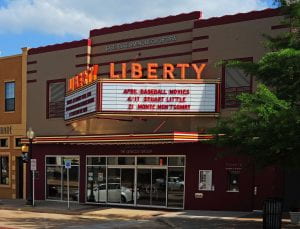1970s and Onwards: Innovation in Popular Culture – Around the World.

- The Kingdom and the Beauty (1959) dir. Li Han-hsiang – Feminine, perfectly set, colorful.
- A Touch of Zen (1971) dir. King Hu – Wider screen, more aggressive, faster paced. Every move designed. Graceful, exquisitely engineered cinema. No ordinary kung-fu movie, starts an action movie, then turns into a ghost story. Sunlight cuts like a sword, it sounds like steel. Action cinema at its most innovative. Still stylized and beautiful.
- Enter the Dragon (1973) dir. Robert Clouse – More masculine film, shows real anger, and hyper realism. Although Bruce Lee was fast/furious, the camera wasn’t. There wasn’t much editing, and it captured all the action calmly. A story about male bonding.
- A Better Tomorrow (1986) dir. John Woo – 80’s clothes, sex, hedonism. A story about male bonding. What was new was the style of the movie. Shootouts filmed with slow motion, and several angles. Even tracking shots.
- Iron Monkey (1993) dir. Yuen Woo-ping – Cutting is fast, and numerous, fights were very vertical, fights were in the air.
- The Matrix (1999) dir. Lilly Wachowski & Lana Wachowski – Inspired heavily by Yuen Woo-ping, with it’s very vertical fights, slow motion, etc. Heavily gravity-defying. Wires were used to help to film action scenes.
- Once Upon a Time in China (1991) dir. Tsui Hark – “The Steven Spielberg” of Hong Kong. Utilized a scene of a man falling off a roof for a different angle, and as a comedic effect. A simple shot was filmed/cut heavily.
- New Dragon Gate Inn (1992) dir. Raymond Lee – Fight was like there was a whirlwind in the room.
- Mughal-e-Azam (1960) dir. K. Asif – A sparkling scene, with mirrored sets. Wanted to be filmed in color, yet it wasn’t. Colorized version was heavily pink.
- Devi (1960) (introduced in Episode 6) dir. Satyajit Ray – Showed an actress using tiny head movements, and closeups, for comparison for the next scene.
- Mausam (1975) dir. Gulzar – Actress turned into the “Queen of Bollywood”. Modern look influenced a generation of Indian women. Showed a future version of characters. Songs were used for the narrative.
- Zanjeer (1973) dir. Prakash Mehra – Heavily utilizes closeups, dramatic fragments, and fear. The music crashes like waves.
- Sholay (1975) dir. Ramesh Sippy – Widescreen titles, and landscape was like a western. One of the most influential films in the history of film. Tried to capture the spirit of the 70’s. Utilizes freeze frames and slow motion. Heavily shifts in tone. One minute can go from a lightly musical, then suddenly turn into a heavily action/violent scene.
- The Message: The Story of Islam (1976) (a.k.a. Mohammad, Messenger of God) dir. Moustapha Akkad – Utilizes a lot of actors, took 4 months to build the sets. Looks like a biblical epic, utilizes a shot where an actor is talking to the actor, one would expect a shot showing who he is talking to, yet the camera just zooms in on the actor. Made 2 versions, an Arabic, and an English version.
- The Making of an Epic: Mohammad, Messenger of God (1976) dir. Geoffrey Helman & Christopher Penfold – Shows Akkad being calm/collective, and gives info about his personal life.
- The Sparrow (1972) dir. Youssef Chahine – Shows a terrible moment in Arab territory. Films the actors watching bad news. Used to capture the emotion, and the shock. Shows disparity, especially in the end.
- The Exorcist (1973) dir. William Friedkin – Shows middle class, and a believable setting. Wanted a realistic horror film. Showed a heavy, raspy voice, the actress messed up her own voice to make it sound raspier. “I have my finger on the pulse of America”.
- A Guy Named Joe (1943) dir. Victor Fleming – Spielberg more influenced by this film than European movies. Soft black/white, and shows unashamed emotions.
- Jaws (1975) dir. Steven Spielberg – Took 265 million dollars at the box office. Captures the swell of the sea. Shows visual unity.
- The Making of Steven Spielberg’s Jaws (1995) dir. Laurent Bouzereau – Utilizes a shot of people walking past the camera to cut between shots. Shows the point of views of people. Uses a shot of changing the field of view, and zoom, similar to that of Vertigo.
- Vertigo (1958) (introduced in Episode 4) dir. Alfred Hitchcock – Utilizes a shot of changing the field of view, and the zoom at the same time.
- Close Encounters of the Third Kind (1977) dir. Steven Spielberg – Shows the “awe” scene. Wide shot, and the camera dolleys, showing the reaction, building up, tracking and rising, and then finally showing what the actors were looking at.
- Jurassic Park (1993) dir. Steven Spielberg – Also shows the “awe” scene. Utilizes a shot of removing glasses to have a better look. Music is also important within these scenes.
- Star Wars (1977) (introduced in Episode 1) dir. George Lucas – Almost doubled Jaw’s box office takings. Starts like a fairy tail. Shows perspective. Shows the realm of myth. Shows how similar to that it is of a classic fairy tail. Draws richly from film history. Shows how to feel, and not to think.
- The Hidden Fortress (1958) dir. Akira Kurosawa – Shows an iconic duo, similar to that of Star Wars. Also similar to that of it’s soft edge screen wipes. Spears became lightsabers.
- Triumph of the Will (1935) (a.k.a. Triumph des Willens) (introduced in Episode 4) dir. Leni Riefenstahl – Inspired Star Wars by similar looking filming of evil characters.